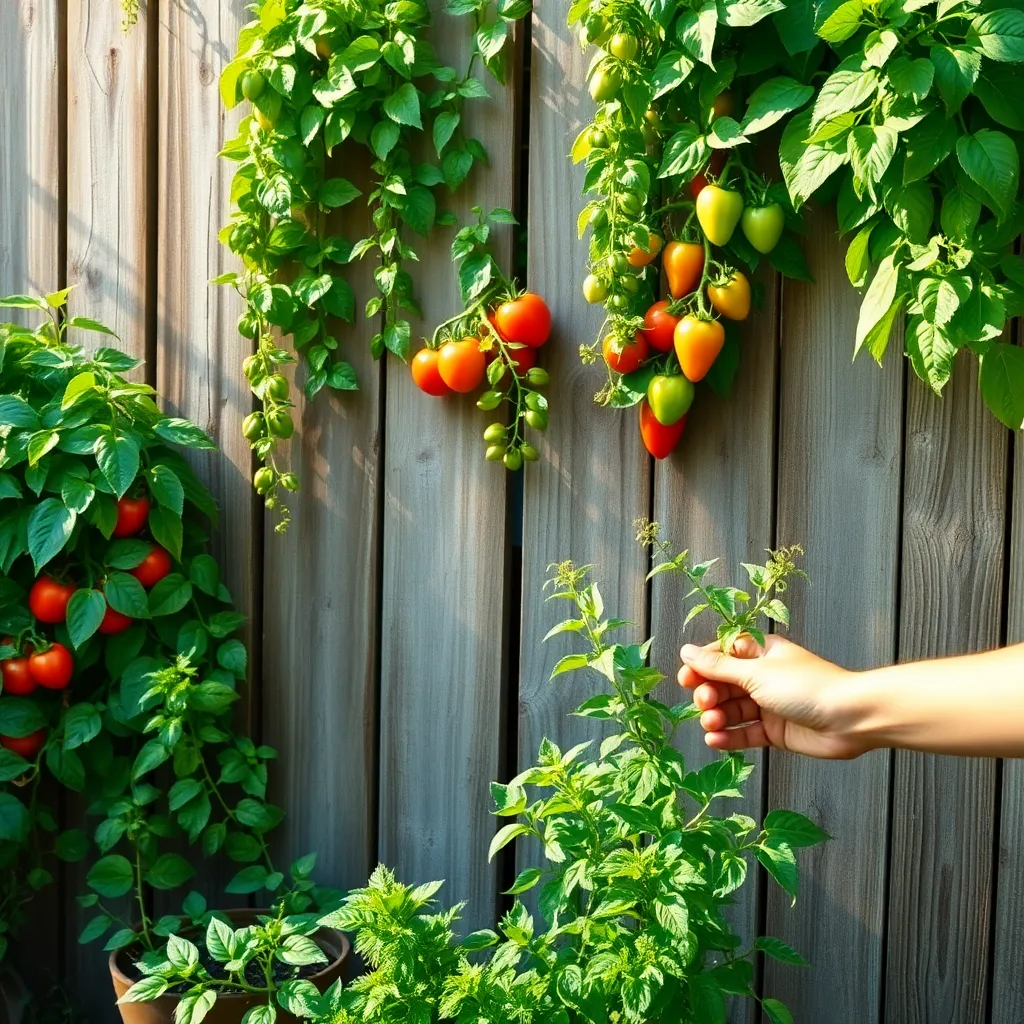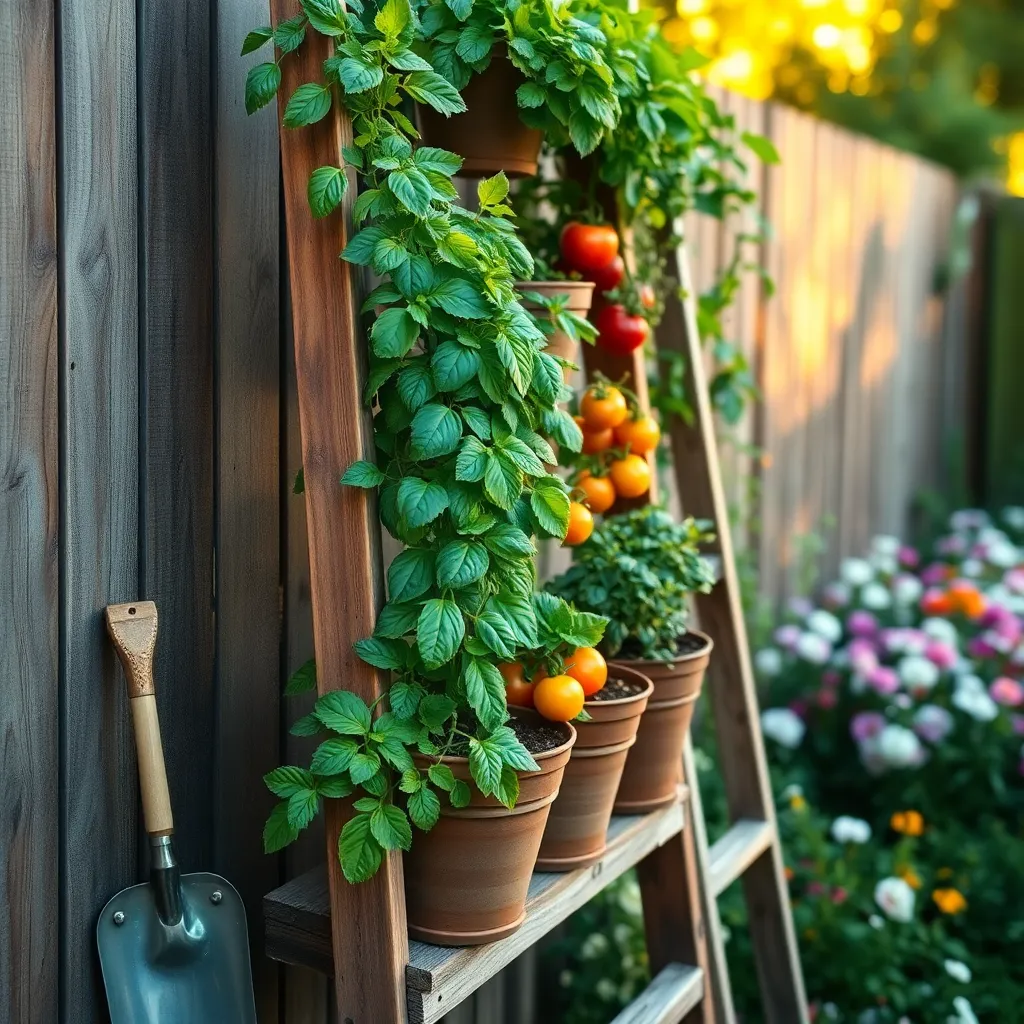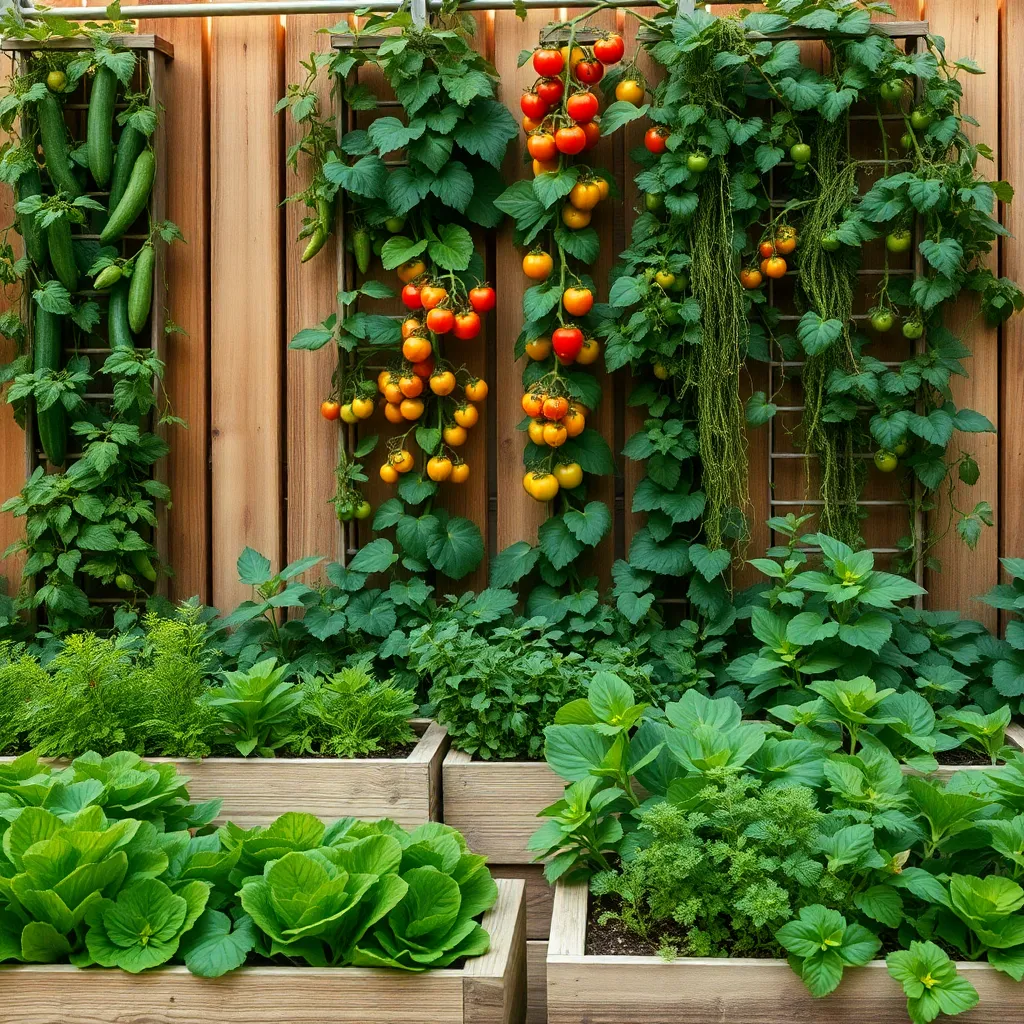Imagine transforming a small patch of your backyard, balcony, or even that sun-drenched kitchen wall into a thriving vertical vegetable garden. Whether you’re a novice gardener eager to dip your fingers into the world of homegrown produce or a seasoned green thumb seeking innovative ways to maximize your space, vertical gardening offers a bountiful solution that’s as rewarding as it is practical.
The beauty of vertical gardening lies not only in its space-saving potential but also in its ability to elevate the aesthetics of any environment. With the right guidance, you can cultivate lush greens, vibrant tomatoes, or even cascading beans, turning any vertical surface into a lush tapestry of edibles. In this article, we will explore essential techniques, from selecting the best plants for vertical growth to crafting supportive structures that ensure your garden thrives.
You’ll discover how to optimize sunlight, water efficiently, and maintain healthy soil, all tailored to a vertical setup. Whether you’re starting with a simple DIY project or planning a more elaborate installation, this guide will provide you with the confidence and knowledge to bring your vertical garden dreams to life. So, grab your gardening gloves and let’s embark on this vertical adventure together, where every inch of space can become a canvas for your gardening creativity.
Select a Suitable Wall Space

Begin by selecting a wall space that receives adequate sunlight, as most vegetables require at least six hours of direct light daily. South-facing walls are often ideal, but observe the spot throughout the day to ensure consistent exposure.
Consider the wall’s surface material, as it must be sturdy enough to support the weight of your vertical garden structure. Brick or concrete walls are excellent choices, providing solid backing and thermal mass that can help moderate temperature fluctuations.
Next, assess the wall’s proximity to a water source to make regular watering convenient and efficient. Installing a simple drip irrigation system can be a game-changer, especially for larger setups, as it ensures your plants receive consistent moisture without the hassle of daily hand watering.
For those with limited wall space, prioritize compact and fast-growing vegetables such as lettuce, spinach, and herbs. These plants thrive in smaller containers and adapt well to vertical gardening, allowing for a productive harvest with minimal space.
Choose Vertical Planter Type

After selecting a suitable wall space, the next step is choosing the right type of vertical planter for your vegetable garden. Vertical planters come in various styles, each suited to different plant types and gardening conditions.
Consider using a pocket planter if you’re short on space and want a simple setup. These are ideal for growing smaller vegetables like lettuce, spinach, or herbs as they allow easy access to each plant.
For those interested in a more substantial setup, stacked planters are a great option. They provide deeper growing space, making them perfect for root vegetables like carrots or radishes.
Another option is the trellis system, which is excellent for climbing plants like peas or beans. This system encourages vertical growth, maximizing the use of vertical space and improving air circulation around plants.
When selecting a planter, ensure it has adequate drainage to prevent waterlogging, which can harm roots. Opt for planters made from durable materials like plastic or treated wood to withstand outdoor elements.
For best results, fill your planters with a high-quality potting mix rich in nutrients. Regularly check soil moisture levels, as vertical planters can dry out faster than traditional gardens, necessitating frequent watering.
Install Secure Mounting System

To begin installing a secure mounting system for your vertical vegetable garden, first assess the structural integrity of your chosen wall or fence. It is crucial to ensure that the surface can support the weight of your planters and plants, especially when the soil is wet and heavier.
Choose mounting hardware that matches both your planter type and the surface material. For wooden structures, use galvanized screws or brackets, while masonry walls might require expansion bolts for added stability.
When positioning your planters, make sure to align them in a way that allows for adequate sunlight and air circulation. This helps prevent diseases and supports healthy growth, especially for sun-loving vegetables like tomatoes and peppers.
For added security, consider using anti-tip brackets if your planters are particularly heavy or tall. This is especially important in areas prone to wind or if you have children or pets who might bump into the structure.
After installing the mounting system, regularly check the hardware for any signs of wear or looseness. Secure fittings ensure that your vertical garden remains safe and functional throughout the growing season.
Fill Planters with Potting Mix

To ensure your vertical garden thrives, it’s crucial to fill planters with the right potting mix. Choose a high-quality potting mix enriched with organic matter to provide essential nutrients for your plants.
Look for a mix that offers good drainage and aeration, as this will help prevent waterlogging. Adding perlite or vermiculite can enhance these properties, ensuring roots have access to both air and water.
For those growing vegetables, consider incorporating a slow-release fertilizer into your mix. This will provide a steady supply of nutrients, promoting healthy growth throughout the season.
When filling your planters, avoid compacting the soil too much. Lightly pat it down to eliminate large air pockets, yet keep it loose enough for roots to easily penetrate.
Plant Vegetables Strategically

To make the most of your vertical vegetable garden, consider the specific needs of each plant. **Choose plants that thrive in similar conditions** to ensure they all flourish together.
It’s essential to think about the space and light each plant requires. **Place sun-loving plants such as tomatoes and cucumbers at the top** where they’ll receive ample sunlight, and shade-tolerant varieties like lettuce and spinach lower down.
Incorporate companion planting to naturally deter pests and improve growth. For example, growing **basil alongside tomatoes** can enhance their flavor and help repel insects.
Beginners should start with easy-to-grow vegetables like radishes and beans, which are forgiving and quick to mature. Advanced gardeners might try their hand at vertical trellising with **climbing plants like peas and pole beans**, which can maximize vertical space.
Conclusion: Growing Success with These Plants
As we wrap up our exploration of building a vertical vegetable garden, let’s reflect on the five key relationship concepts we’ve uncovered: communication, patience, nurturing, adaptability, and shared goals. Just like in any relationship, communication is crucial; understanding your plants’ needs mirrors the importance of listening and responding to your partner. Patience in growth, whether in gardens or relationships, allows beautiful developments over time. Nurturing your plants parallels the care and attention needed to keep any bond thriving. Adaptability helps you make necessary changes, whether it’s adjusting to sunlight needs or evolving within your partnership. Lastly, sharing goals strengthens bonds, just as planning your garden layout can bring couples closer together.
Now, take an actionable step: choose one of these concepts to focus on in your relationship this week. Whether it’s enhancing communication or nurturing your connection, small actions can lead to significant growth.
Remember, successful relationships, like thriving gardens, require ongoing attention and love. Bookmark this article to revisit these concepts whenever you need guidance. Together, let’s cultivate a future where your relationships flourish, providing joy and fulfillment. Here’s to your journey of growth and connection!

